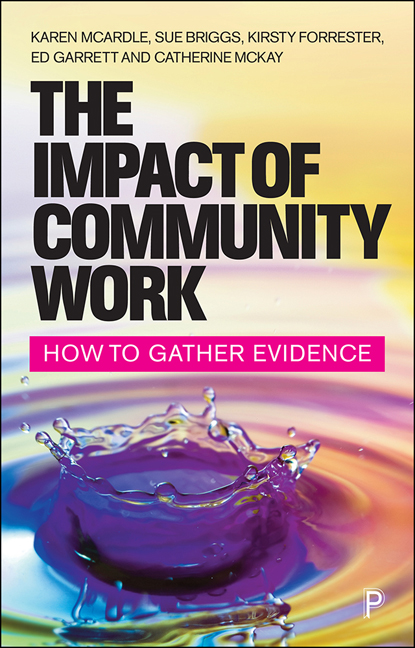7 - Questionnaires
Published online by Cambridge University Press: 10 March 2021
Summary
Introduction
This chapter discusses the use of questionnaires as a means of generating evidence of impact. Questionnaires are often used in semi-structured interviews as a schedule of questions and this is discussed further in Chapter 8. Here, we focus on questionnaires completed by the participant or stakeholder. The first thing to mention in thinking about questionnaires is that they rely very much on the willingness of people to give their time, and on literacy issues of comfort with reading and writing. Many a time we have seen people struggling to fill in a questionnaire holding pen or pencil uncomfortably and managing one or two words, if any. As the process is quite distinct, in this chapter we use the term respondents rather than participants, the latter word used elsewhere for learners, clients, patients and other service users.
Robson (2017) makes the following observations on questionnaires:
Questionnaires are very widely used in small-scale evaluations…. It appears deceptively straightforward to devise the questions. Completion of the questions does not take long and can be incorporated without undue difficulty into a program. Without forethought, the task of analysis can be routinized and it can generate satisfying quantitative data.
There are some underlying problems, however. Good questionnaires are not easy to devise, as is testified by the prevalence of many awful examples. More fundamentally, the choice of a questionnaire should be governed by the research questions. So, if for example the main purpose of an evaluation is to assess whether the program goals have been achieved, then you only use a questionnaire if it will help to do this. (Robson, 2017, p 104)
This extract describes how the use of questionnaires may appear to be a simple method, but we argue in this chapter that it takes considerable skill to produce a questionnaire that will help you find out what you want to know. Questionnaires are designed mainly – but not exclusively – to supply quantitative information – information in numbers. This chapter does not deal with statistics, as it would require a whole book to do this, but there are many accessible texts suggested for further reading in Box 7.1 at the end of this chapter if you wish to use more than descriptive statistics and basic percentages.
- Type
- Chapter
- Information
- The Impact of Community WorkHow to Gather Evidence, pp. 119 - 134Publisher: Bristol University PressPrint publication year: 2020

